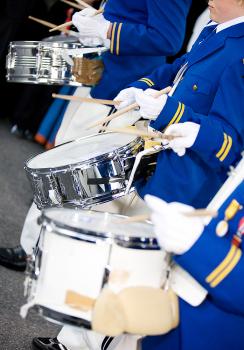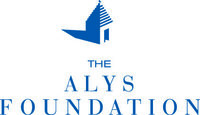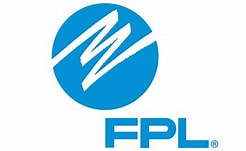You and the Ukes

- School:
- Freeport Elementary
- Subject:
- Teaching Quality
- Teacher:
- Angela Saltsman
- Students Impacted:
- 700
- Grade:
- K-5
- Date:
- October 9, 2017
Investor
Thank you to the following investor for funding this grant.
SunTrust Bank - $990.80
Original Grant Overview
Goal
My students ask me all the time how I know what notes to play when I accompany their songs on piano, guitar, or my ukulele. I spend a lot of time working with them on reading music and applying those skills to singing, drumming, and playing recorders, but one of the more relevant aspects of reading and playing music is learning to play chords (three or more music notes played at the same time). Chords are part of my curriculum, but the students must take turns on the piano (one or two at a time) to practice this skill. Some days I pass around my one ukulele to give them a chance to try a couple of chords, one student at a time. You would think it’s Christmas day when I let them play my personal ukulele. Having a classroom set of ukuleles would be the perfect way to teach the concept of strumming melodies and chords, with all students involved and engaged simultaneously. A classroom set of ukuleles would be used by over 700 students. I would use them in Kindergarten through 4th grade for various music lessons. A class set of ukuleles would really benefit third and fourth grade students who are at the prime age of developing hand/eye/ear coordination. It would help satisfy nine third grade Florida standards, and four fourth grade Florida standards. If granted, fourth graders would use them in their spring concert this school year as a class or group performance in one or more songs.
Standards covered if granted:
MU.4.F.2.1
Describe roles and careers of selected musicians.
MU.4.H.1.2
Describe the influence of selected composers on the musical works and practices or traditions of their time.
MU.4.H.3.1
Identify connections among music and other contexts, using correct music and other relevant content-area vocabulary, and explore how learning in one academic area can help with knowledge or skill acquisition in a different academic area.
MU.4.S.2.1
Apply knowledge of musical structure to aid in sequencing and memorization and to internalize details of rehearsal and performance.
MU.3.C.2.1
Evaluate performances of familiar music using teacher-established criteria.
MU.3.F.2.1
Identify musicians in the school, community, and media.
MU.3.F.2.2
Describe opportunities for personal music-making.
MU.3.H.1.1
Compare indigenous instruments of specified cultures.
MU.3.F.3.1
Collaborate with others to create a musical presentation and acknowledge individual contributions as an integral part of the whole.
MU.3.H.1.2
Identify significant information about specified composers and one or more of their musical works.
MU.3.S.1.1
Improvise rhythms or melodies over ostinati.
MU.3.S.2.1
Identify patterns in songs to aid the development of sequencing and memorization skills.
MU.3.S.1.2
Create an alternate ending to a familiar song.
What will be done with my students
A classroom set of ukuleles would be used by over 700 students. I would use them in Kindergarten through 4th grade for various music lessons. These instruments would be reused every year, so they will benefit hundreds of students for years to come. I have also already attended professional development sessions and workshops on teaching ukulele in the classroom and would love to put those strategies to use. Projects would include: learning about stringed instruments, science and vibration lessons, cultural connections with Hawaii and how the instrument came to be, professional musicians/composers who play ukulele, and incorporating ukuleles into classroom, stage, and community performances. My fourth grade students are working toward a spring concert this year and would be playing ukuleles as a group for at least one of the songs I have planned. They will be required to research the song origins, composer, how the song has changed over time, and how to play and sing the song, which they will showcase at their concert for an audience at our school in May 2018. Ukuleles would be used regularly in performances in years to come. In future years, I also plan to start a ukulele club after school that would also perform regularly.
Benefits to my students
The benefit of each child having their own ukulele to play when they come to music is the structured observation of growth and success to help them develop into musically artistic and holistically creative students and future citizens. To evaluate students on their success with ukuleles, I plan to keep a ukulele gradebook to evaluate which chords students can successfully play, with a rubric to guide the assessment. I also plan on having students take a survey each quarter on their progress with their instruments, and how they would self-assess the value of learning to playing the ukulele. I will do this with all grade levels as they do activities with ukuleles, but I will use this data collection heavily with fourth graders (approximately 120 students) as they prepare for their spring concert with these instruments.
Budget Narrative
My students would be ecstatically grateful to have a classroom set of ukuleles with which to practice and perform for school and community events. I teach five grade levels, each grade level having six classes each. My largest class has thirty-three students. Ukuleles are instruments that many of my students would not be able to purchase on their own and might never get to play otherwise, as many of them are from low-income families. Students in every grade level at my school will be able to play them for years to come. They beg me constantly to teach them how to play, and most times I tell them we just do not have time, as we would have to take the time to pass around my personal ukulele just to “try it out”. My standards indicate I should be teaching both string instruments and chords (three or more notes played simultaneously). Ukuleles would be a highly motivating tool to teach the standards these students need to become successful musicians.
Items
| # | Item | Cost |
|---|---|---|
| 1 | 20 Makala Kala MK-S Ukuleles | $990.80 |
| Total: | $990.80 |






Share
Please share this page to help in fulfilling this grant.
Email to a Friend